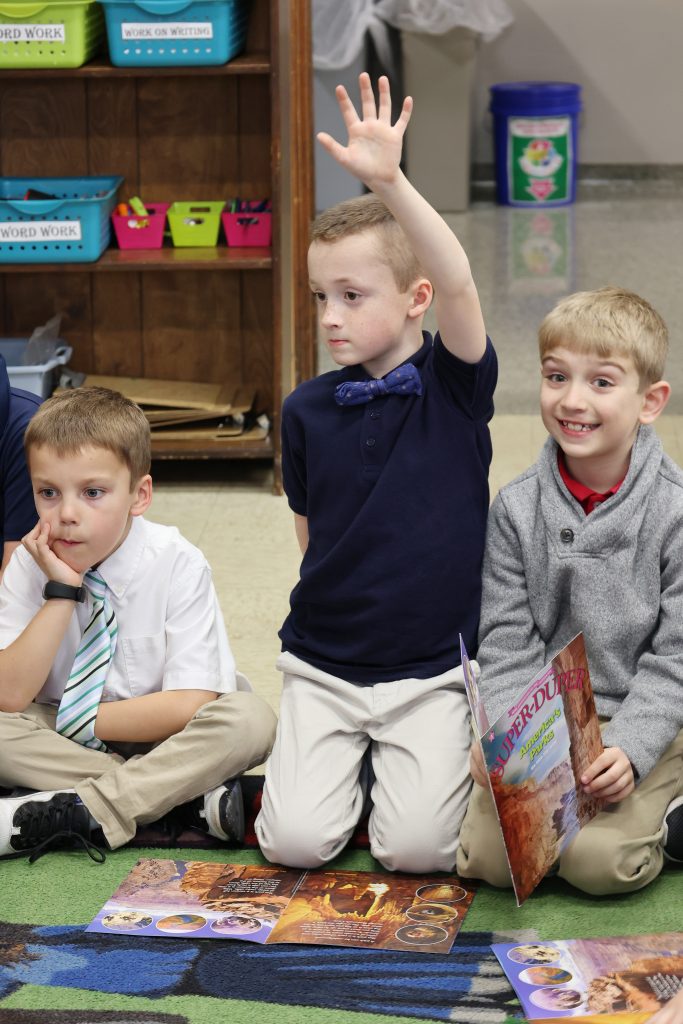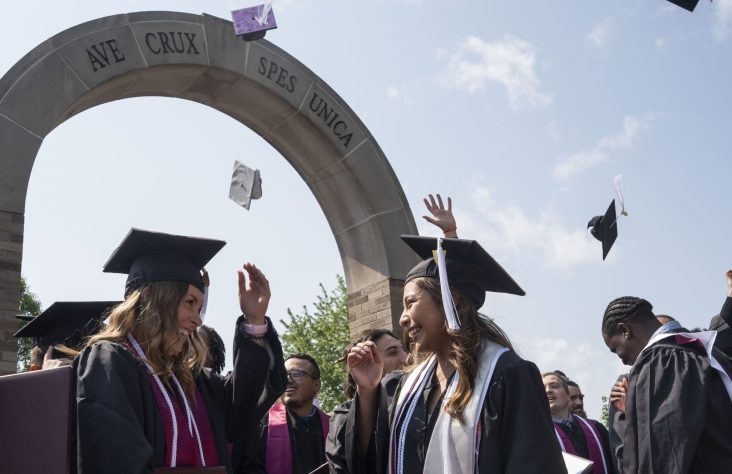August 9, 2022 // Schools
Education key to keeping children safe at diocesan schools
By Dennis Wiegmann
The most frightening news that a person – particularly a parent, grandparent, or guardian – can hear is a report of school violence. Children, gifts from God, are entrusted into a school’s care for seven-and-a-half hours a day, five days a week, for 180 days of the year. The days of leaving school doors unlocked and allowing visitors to enter into the main office without first ringing a buzzer and being let in, have passed.
Recently, nearly everyone has heard on the news, seen on the internet, or read in the newspaper about the tragedy in Uvalde. It makes one think a little more intently on how safe Catholic schools in the Diocese of Fort Wayne-South Bend are and how prepared those who work at those schools are for an intruder. Unfortunately, school violence and shootings are not something that are new to American society. Americans have become familiar with the horrific stories of Columbine, Sandy Hook, and Parkland. Members of the public have learned about the mistakes that were made, not only by the schools, but also by law enforcement.

Jennifer Barton
Providing a safe learning environment for schoolchildren is a top priority for Catholic Schools within the Diocese of Fort Wayne-South Bend, and administrators, teachers, and staff members share in that responsibility.
These types of incidents make everyone want to become more vigilant and more aware of their surroundings. Some parish communities do not believe that local schools can be impacted or affected by these types of tragedies. Some say, “This will never happen at our Catholic school or our church community.” The truth of the matter is that these types of violent incidents can happen everywhere, even in Catholic schools. This is why so many different precautions, procedures, and safety handbooks have been created in order to be more prepared if an incident does happen at school.
Much to some parishioners’ and families’ chagrin, coming into diocesan Catholic schools has changed immensely over the years. Now, visitors must ring a buzzer and state their name and business at the school. If visiting a classroom or assisting in the building, one must have a name badge or button to identify themselves as a visitor. If a person is not approved through safe environment training, they are not allowed to volunteer for school activities. Things once taken for granted even 10 years ago now have to be evaluated and modified to better suit the safety of schools.
The Catholic Schools Office for the Diocese of Fort Wayne-South Bend has made great efforts to ensure that their schools are becoming better prepared and have implemented effective safeguards in their buildings. Rob Sordelet, Principal of St. Charles Catholic School, chairs the Safety Committee for the Catholic Schools Office. During monthly principal meetings, discussions are held and any up-to-date information that is needed for the schools is provided. Each school is responsible for having one lead Safety Specialist as well as other teachers or staff who are trained as specialists as well. These specialists must first go through initial training with the Indiana Department of Education, which takes place in the fall in Indianapolis. A second training is required in the spring as well.
After this first year, Safety Specialists are then required to go to one longer training each year to continue to be certified. At these trainings, speakers from around the country present on different topics and scenarios as well as provide the most up-to-date information that is available on school safety. These training sessions are not just focused on active shooters or violence in school; they are also focused on weather emergencies and other safety issues that can happen in a school building.
Along with the certified School Safety Specialists for each building, every school in the diocese must follow Standard Response Protocol (SRP), created by the I Love U Guys Foundation. The SRP provides schools with options on how to take action depending on the safety threat. The five protocols are “hold, secure, lockdown, evacuate, and shelter.” All school staff should be familiar with these protocols and understand what each of them mean, so that in the case of a crisis, procedures will be followed to ensure safety for all. To learn more about the I Love U Guys Foundation, go to iloveuguys.org.
Schools are also required to create an Emergency Preparedness and Crisis Intervention Plan. This plan provides all school employees with important information such as emergency numbers, as well as spelled out roles and responsibilities for staff. Additionally, schools provide staff members with evacuation procedures and locations for short-term and long-term evacuations. These plans must be submitted annually to the Catholic Schools Office.
Due to the increase in school safety interventions, the Department of Homeland Security provides an opportunity for schools to apply for the Secured School Safety Grant. Schools can write their grant applications to cover safety items such as security cameras, new doors, proper ventilation, or a new secured entry, to name a few. There is an upfront commitment from the school to have the money budgeted to cover the grant amount. However, the Department of Homeland Security matches a percentage of the cost, sometimes up to 100%. Over the last five to six years, many schools in the diocese have been able to benefit from this annual grant.
Parents and guardians send their children to Catholic Schools because they want them to have the opportunity to receive a great education, but more importantly, to grow in their faith and become closer to Christ. Schools must also ensure that these precious children are provided with the most safe environment possible for all.
While safety concerns arise, Catholic schools within the diocese continue to be educated on ways to keep children safe and secure.
The best news. Delivered to your inbox.
Subscribe to our mailing list today.






